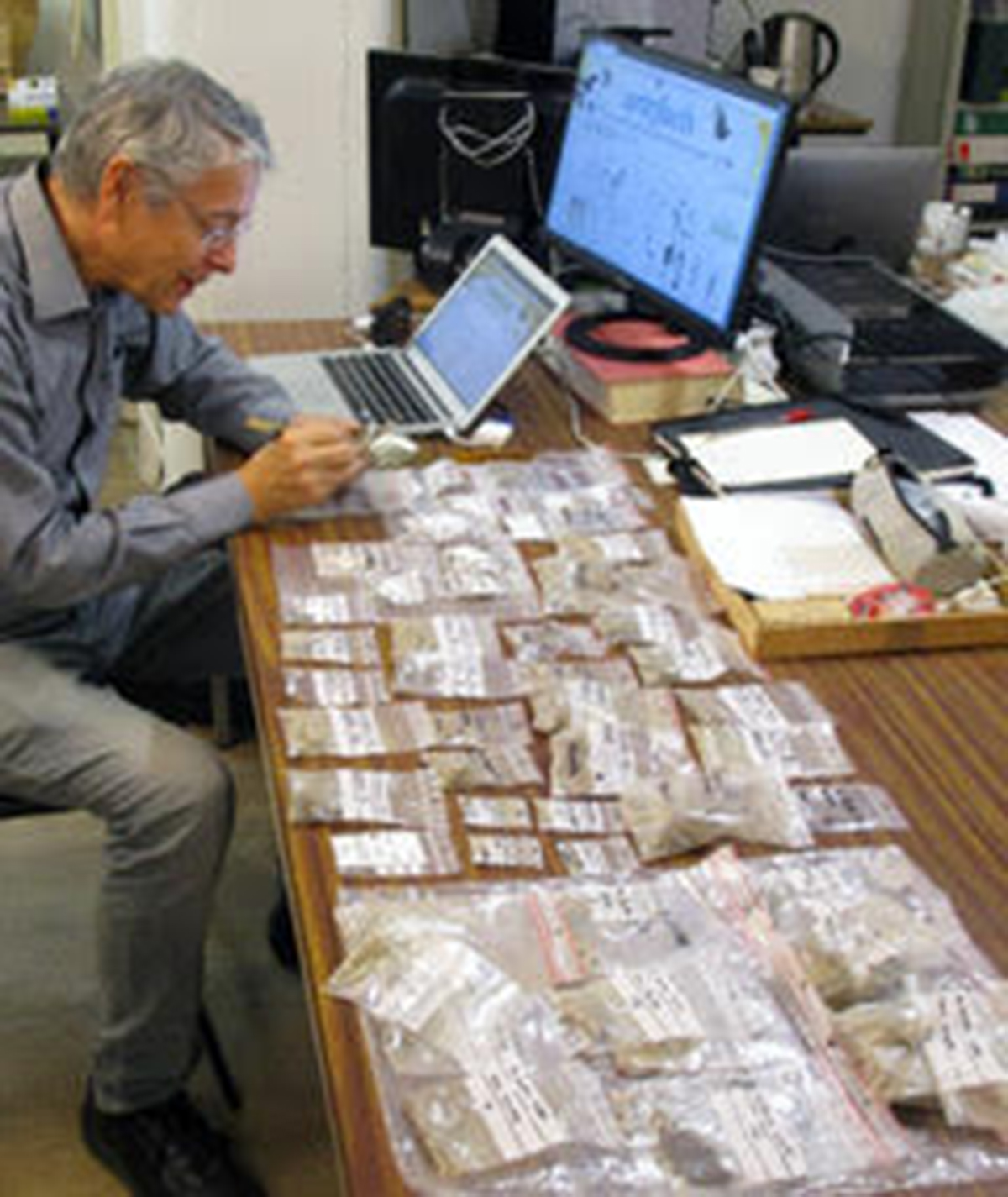Superheroes are only characters for fancies stories? Could we see them like the new gods for our contemporary world? Could they help to a sociological study of US society?
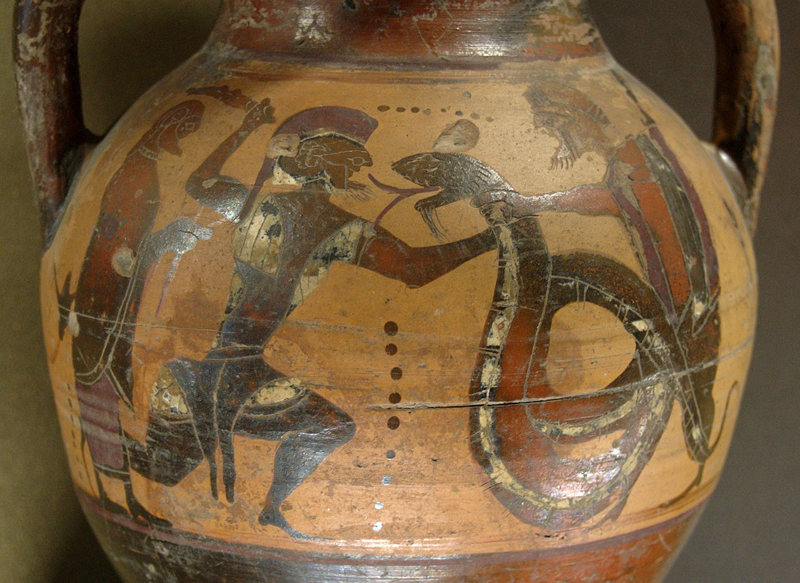 When men started to organize themselves in centralized communities, a part of the population had to pay tribute to the elite, a social organization called by Professor Jared Diamond a kleptocracy. So that the masses would accept such a system justifying it by religion was a good solution. Religion and priests served in keeping power, transferring a part of the wealth and resources to them, and keeping peace between unrelated individuals. These institutionalized beliefs (or religion) also allowed in giving those unrelated individuals a common ideology. Priests were the only ones to understand the surrounding environment, but also to control it thanks to their privileged relationship with the divine [1].
When men started to organize themselves in centralized communities, a part of the population had to pay tribute to the elite, a social organization called by Professor Jared Diamond a kleptocracy. So that the masses would accept such a system justifying it by religion was a good solution. Religion and priests served in keeping power, transferring a part of the wealth and resources to them, and keeping peace between unrelated individuals. These institutionalized beliefs (or religion) also allowed in giving those unrelated individuals a common ideology. Priests were the only ones to understand the surrounding environment, but also to control it thanks to their privileged relationship with the divine [1].
If ever times got hard, the gods were abandoned to worship others or were prayed with more fervor still. Gods are the most called upon when we are in need of them. Heroes and mythologies allowed a common identity and ideology between non-related members of a community [2]. Gods and heroes reflect the values of a culture and inspire it. In a time of crisis and need, shouldn’t they inspire and protect the people that venerate them? Every culture and time thus has had gods and models that characterized it and talked to its people, rooted in its history and cultural heritage. This can be found all over the globe. Anglo-Americans, however, have done it in a slightly different fashion. Cut from the European continent and without a long historical tradition, Americans still have models that inspire them in times of need. Inventions of the 20th century with the creation of Superman in 1938, their heroes have the powers of gods, intertwining both. They are the American answer to the ancient history and heroes of Old Europe. They are the superheroes.
Americans until recently were mainly European immigrants sharing for the most part the protestant religion. Their culture, although containing the Bible and sharing that of England, has less historical heroes for their history officially starts in 1776, when the United States became independent, or goes back to the beginnings of colonization in 1620 or 1607. Wars and the hard triumph over the wilderness have forged heroes such as George Washington, Abraham Lincoln, John Smith, Buffalo Bill or the Pilgrims [3]. But it was during the thirties and forties that the United States endured the greatest crisis of its history. The Great Depression and Second World War demanded escapism as great as what Americans had to face. Comics had started to be published not only in regular newspapers, but specialized ones as well, with protagonists from another time or planet [4].
Then in 1938 came a godly hero named Superman, giving birth to the very term and notion of superhero [5]. Indeed, if Superman did have forefathers such as Mandrake The Magician, created in 1934 [6], or the French Nyctalope, created in 1911, as well as mythological characters, the last son of Krypton gathered together much more universal mythological themes along with a more original costume and the representation of the American ideal. The Nycatolope is a French character and thus less likely to cross the Atlantic although he might appear in comics in a near future in The League Of Extraordinary Gentlemen [7]. Superman’s creators had been refused for years but once published the success was immediate and massive. Batman was created a year afterwards, a dark knight in complete opposition to Superman. Batman himself owes a lot to earlier creations such as Zorro, or The Shadow created in 1930 featuring a protagonist dressing all in black and fighting crime [8]. Batman was given more gadgets, a better costume and a sidekick the age of his reader.
After those two creations, a tidal wave of various superheroes washed over the United States, all more original and colored than the other [9]. The war was fertile ground and Nazis and Japanese were the foes to be hit and punched in the pages of comics [10]. In comics children also learned right from wrong [11] as well as helping in the war effort [12]. Even adults found in it a relaxing read. So much so that superheroes found themselves in the GI care-packages along with Coke, chewing gum, and chocolate.
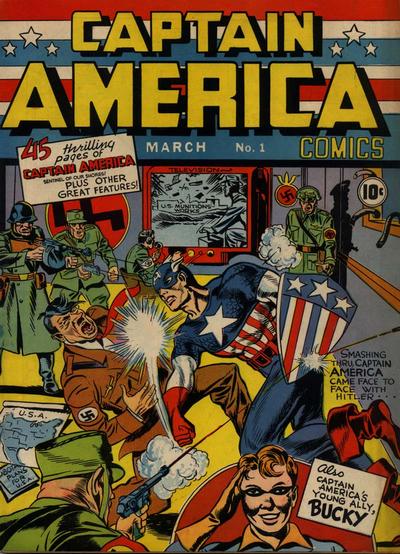
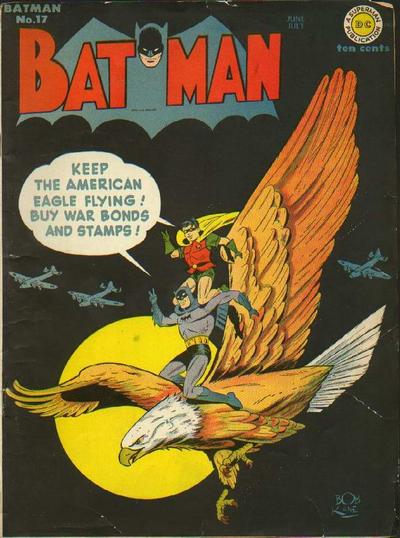 The American army transported superheroes across the globe [13]. Captain America, created in 1941 is a symbol of this time with his patriotic costume [14] and his first issue saw him punching Hitler himself. Superman abducted Stalin and Hitler and both dictators get tried at the siege of The Society Of Nations, ending the war. As for Batman and Robin, they were seated on a bald eagle to encourage parents and children in buying war bonds so that the said bird be kept flying [15]. They were the mascots of this era [16].
The American army transported superheroes across the globe [13]. Captain America, created in 1941 is a symbol of this time with his patriotic costume [14] and his first issue saw him punching Hitler himself. Superman abducted Stalin and Hitler and both dictators get tried at the siege of The Society Of Nations, ending the war. As for Batman and Robin, they were seated on a bald eagle to encourage parents and children in buying war bonds so that the said bird be kept flying [15]. They were the mascots of this era [16].
Once the war was over, superheroes became peace victims. The conflict that had done their success was no more, and readers stared to read horror stories, crime stories, or western instead [17]. Then in 1954, the fatal blow came in the shape of a book written by a psychologist named Frederic Wertham called Seduction Of The Innocent [18]. The man accused comics of being the cause of every ill in society, from juvenile delinquency and violence to asthma and homosexuality [19], a very similar discourse given to television and the Internet today. However, the book got great public attention and a very strict censorship, the Comics Code Authority, was enforced upon the industry. Comic stories became sweetened and no moral or authority had to be offended. A lot of characters did not survive this and the superheroes that did suffered adventures worthy of farcical science fiction. The readers lost their interest and American superheroes almost disappeared [20].
Then, in the sixties and especially in the seventies, everything started to change [21]. Superheroes came back. The United States went through a crisis, this one from the inside. It was the time of civil rights, feminism, of social protest and above all of the recognition of being different. The X-Men got created in this context. Batman started to live darker and more serious adventures again, working for his city on Earth and not in space with wacky allies at his sides anymore [22], such as an ape or Bat-Mite, a little character who does magic and worships Batman [23]. All this continued in the eighties, when the fight against crack and gang violence in New York gave Batman new battles on paper [24]. On screen as well, with the two outstanding Tim Burton movies in 1989 and 1992 [25]. As for Superman, he battled his old foe Lex Luthor who became a corrupt president. Superheroes went on with their wars against homophobia, firearms, and land mines [26]. After the beginning of the nineties, the Clinton administration put a lull on social problems. The need for superheroes was not as strong anymore and the quality went down [27]. The two very bad Batman movies in 1995 and 1997 by Joel Schumacher are a clear evidence of this [28]. A day in September 2001 changed all this. After September 11th, superheroes resumed their jobs [29]. Not in the same radical way as in the last war however [30], but their stories have taken back importance and in time of crisis, their popularity doesn’t die down [31]. But why indeed are they so popular?
As said above, superheroes were born during the Great Depression. America needed such heroes. Superheroes, although having superpowers (except for Batman or Ironman), live in our world and far from battling monsters or aliens, they first fought gangsters, corrupt politicians or other evildoers who were the real everyday enemies of readers in those years [32]. Superman was therefore more of a super New Dealer [33]. The two authors never said as such, but Roosevelt did fight against the same foes as Superman. Comics are stories that inspire dreams and hopes. Readers dream about what they could do if they could accomplish miracles and hope that in spite of all the possible pitfalls they too shall triumph. Superheroes are good and teach readers right and wrong. They fight against those who could harm our loved ones but also for the sake of people we don’t know. Their values and virtues are those of heroes and divinities, reinforcing their mythological side, that of the ancient tales which captivated listeners centuries ago without taking the very names of gods, such as certain superheroes like Thor or Loki.
Superman is the very archetype of the superhero, the first considered as such by its creators, and as such he had to possess references worthy of the greatest mythologies. Its creators, Jerry Siegel and Joe Shuster, made of their character a messiah [34]. Like Moses, his parents placed him in a cradle and sent him away. Outer space just replaced the Nile. And like Moses, he guides his people towards good to show them what is right. Like Jesus he has powers and helps his country and people of adoption. His powers also remind us of that of Hercules’ with his strong muscles. Like Hercules, he is blessed by the gods and shares aspects with Achilles or Gilgamesh [35]. The two authors being Jewish, the Europe they came from was on the other side of the Atlantic and anti-Semitism there at the time must have worried them. This kind of story would have reassured them, exactly like that of the Golem [36]. Those analyses are merely hypotheses but Siegel and Shuster having been great lovers of science fiction and mythologies [37], so it is not impossible. Indeed, Superman’s very name, Kal-El, means in Hebrew “All That Is God” [38].
But similar to a merciful God he battles for orphans and the needy and protects them. He has a lot in common with Jesus on other aspects. Superman starts to act once he reaches adulthood and spends a more or less normal childhood, especially for an alien. And not least, he even resurrects as seen in comics at the beginning of the nineties. The idea was taken again in the movie Superman Returns in 2006, in which after being beaten and stabbed, Superman rises up again leaving behind an empty tomb [39].
Over time, the character acquired more and more powers, rendering him even more godlike [40]. And, just as for Jesus Christ, which part of Superman is divine gives rise to long debates [41]. However, Superman doesn’t take himself for a god. On the contrary, like Christ he explains his powers are for the good of others [42]. Superman is the very blessing of the gods, the noble symbol of good and sacrifice, perfect in his mind and body, as well as being an immigrant (an illegal alien in all senses of the word, having arrived from space without going through any immigration office) perfectly integrated to American culture [43]. So perfect he becomes boring. Batman on the other hand is more complex and therefore more interesting.
Created in 1939 by Bob Kane to make a symbolic opposition to Superman [44], Batman is dark, grim, with a tragic past and doesn’t have any powers. The murder of his parents is consistent with the urban turmoil of the Great Depression. Batman represents not a messiah but God’s justice itself [45], or Ulysses enduring the wraths of the Greek gods and surviving only with his wits and strength [46].
Batman lives in the real world and his qualities thus speak more to the Earthlings that we are. Batman is a vigilante for he has a motive of vengeance against all criminals. Alone, he is still committed to changing the world [47]. He became what he is thanks to a firearm and therefore does not use any. This is an important moral message in the United States. With or without firearms, Batman fights against gangs, mad scientists, corruption and murderers. It is not the Devil, supernatural forces or angry gods anymore, but evil is still here and much more real [48].
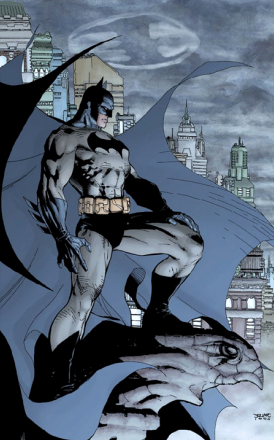
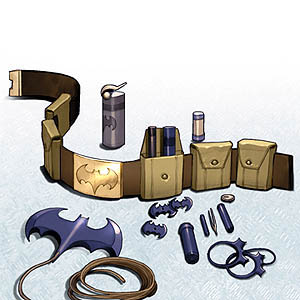 Bob Kane never confirmed those analogies, even if they are recurrent in all the interpretations of the Dark Knight. In Batman Begins (2005) and two following movies, Gotham City is threatened by terrorism, urban disorder and social anarchy [49], very real and contemporary threats. Batman is human and uses the assets that heroes have always had to vanquish their adversaries: intelligence, strength, determination, and creativity. And without superpowers, modern technology is also very useful. For defeat is not an option, as people would die and anarchy would win. To inspire us, evil must not triumph. The battle against evil is eternal but not insurmountable. The road is long, lonely, and fraught with hardships but if we do not give up, we shall triumph. But if to fight evil heroes like Batman have to use their fits when justice is indeed much too blind, how not to sink to the same level as the evil they battle, to then get accustomed to it and use the same methods as the bad guys? With these questions superheroes remind their readers of the need for self-discipline, principles and self-control [50].
Bob Kane never confirmed those analogies, even if they are recurrent in all the interpretations of the Dark Knight. In Batman Begins (2005) and two following movies, Gotham City is threatened by terrorism, urban disorder and social anarchy [49], very real and contemporary threats. Batman is human and uses the assets that heroes have always had to vanquish their adversaries: intelligence, strength, determination, and creativity. And without superpowers, modern technology is also very useful. For defeat is not an option, as people would die and anarchy would win. To inspire us, evil must not triumph. The battle against evil is eternal but not insurmountable. The road is long, lonely, and fraught with hardships but if we do not give up, we shall triumph. But if to fight evil heroes like Batman have to use their fits when justice is indeed much too blind, how not to sink to the same level as the evil they battle, to then get accustomed to it and use the same methods as the bad guys? With these questions superheroes remind their readers of the need for self-discipline, principles and self-control [50].
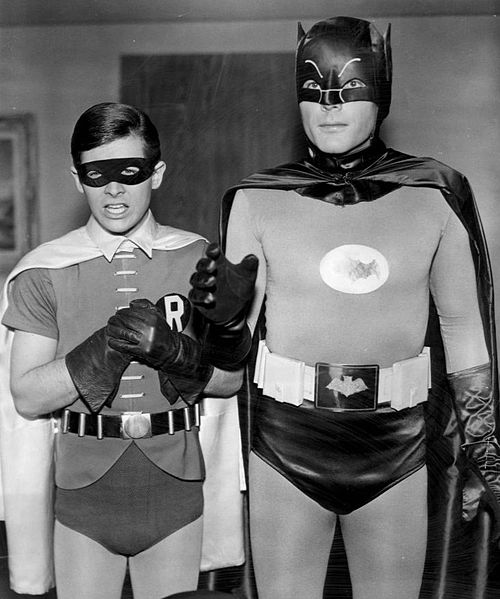 Batman never kills. He leaves justice in the taking care of culprits or hands the required proofs to do so. For he knows that if he started to kill, he would not be any better than those he hunts down. Just as he refuses to use a firearm, no matter how desperate the situation is. As for Robin, he represents the myth of the pupil with his teacher, or rather the mentee with its mentor [51], as were medieval knights with their squires, or Achilles who was taught by the centaur Chiron [52]. Teaching future generations good and evil is made more relevant with a character the age of the readers. For those future generations, the superhero is ready to sacrifice himself even if the society he defends hates him.
Batman never kills. He leaves justice in the taking care of culprits or hands the required proofs to do so. For he knows that if he started to kill, he would not be any better than those he hunts down. Just as he refuses to use a firearm, no matter how desperate the situation is. As for Robin, he represents the myth of the pupil with his teacher, or rather the mentee with its mentor [51], as were medieval knights with their squires, or Achilles who was taught by the centaur Chiron [52]. Teaching future generations good and evil is made more relevant with a character the age of the readers. For those future generations, the superhero is ready to sacrifice himself even if the society he defends hates him.
It is the case for the X-Men. They were created in 1964 [53] and in a time fraught with civil rights. They are real symbols of their time and of course nonexistent in ancient mythologies and tales. The X-Men protect a humanity who hates and rejects them out of fear, an attitude worthy of Jesus Christ. Their foes are the bad mutants, victims of human intolerance. Any schoolboy with glasses, homosexual, colored person or child feeling different could identify with the X-Men [54]. Just as many heroes wait until teenagehood or adulthood to start their adventures and are often unaware of their powers and abilities [55], the mutant heroes of the X-Men start developing their powers with the arrival of puberty, an already difficult time. But their situation is different from that of ancient heroes in that the problems linked to puberty are taken into account in our society. Thus, if the reactions of a hero’s parents are seldom mentioned in old stories, in the X-Men comic parents support their child in their difference or leave him to fend for himself in their panic, in fact leaving him prey to the evil mutants. In mythological writings heroes follow their destinies but the X-Men always have to choose between good and evil for the bad guys are merely those who fell into the cycle of violence in order to stop the intolerance they were the victims of. How not to sink into this vicious circle and not lower ourselves to the same level of those who have made us evil? And to what point can we show to others our redemption? [56]
This quest for redemption characterizes all superheroes. They are different but want to show the world it doesn’t stop them from being good. In that they are different from ancient heroes. Spider-Man is the perfect example of this redemption lived by a teenager. Once bitten by a radioactive spider, he first uses his new talents to do wrestling matches and show himself on television. He uses his powers for himself until a robber he did not want to stop kills his uncle. Feeling responsible of his uncle’s death, he redeems himself in protecting the citizens of New York City [57]. Furthermore, this redemption often follows contradictions, reinforcing the complex aspect of the superhero. Batman fights against the Joker, a terrorist dressed as a clown, a character supposed to be funny and reassuring. Batman, in his dark bat costume, looks more like a demon [58].
The same is true of Spawn, a dead man who made a shady deal with the Devil (without reading the small print) to see his wife again, who comes back to Earth with a decomposed complexion. A terrifying costume hides his revolting appearance. However, he uses his new powers acquired thanks to his life as a mercenary to protect the needy and defenseless, especially the New York homeless [59]. As for Captain America, he first fought with strength against Nazi savagery but how long can we watch him until we realize that he is blond, muscled, tall, prompt to use violence to solve his problems, in fact the perfect Nazi fascist fast admitted into the HitlerJugend? [60].
The character’s creators and its readers didn’t think about it and seeing a patriotic superhero war against the Axis proved his innocence enough. And if he had been short and ugly, would he have attracted so many readers? Although recent, this thinking gives a new dimension to the character. However, it is those new values and contradictions that make superheroes always deeper and close to us. They are human and yet with enough divine to allow us to dream about what we could be, all the while guiding us in the real world which always involves their adventures. In the Watchmen series, don’t the superheroes kill millions on purpose so that Americans and Russians can find a common enemy and stop destroying the planet and themselves with their nuclear weapons [61]? No hero or god would ever have been imagined doing such a thing, even during the Trojan War, especially at a time in which atomic self-destruction wasn’t even imaginable.
Where there were pristine landscapes from the Mediterranean, the heavens or hell, they now live in cities named Gotham City, Metropolis, and others that remind us of New York, if not New York itself. They were unknown before the end of their teenagehood, now their youth expresses the troubles and complexes of ours. Yet they are divine, human, or a mixture of both. Superheroes gather all the archetypes of mythology and religion together for their Young nation of the United States, but like immigrants intertwines them. Their adventures have an ever-growing number of authors.
If Achilles, Jesus or Hercules lived one war or one time period, superheroes come back in each crisis in American society. Their universal values are recycled for each new generation. The United States shall always have challenges to be faced and always the superheroes shall come back. Fans worship them and collect action figures, comics, and other goods like ex-votos. Movies, costumes and stories give rise to passionate debates among fans worthy of councils. Stores, massive for some, are built for them.
Nevertheless, they won’t receive the devotion of a religious worship like the gods of old, and we shall not build them temples or cathedrals (except those in honor of marketing) to beseech their favors. We shall never pray them with all the more fervor to hope to solve our problems and control our environment. We know perfectly well they are characters of fiction. They inspire us but we do not believe in their coming or past existence. They make us dream but we do not possess their powers. We are human beings.
So perhaps this is the reason for which Batman is the most popular of all superheroes. His character and environment are the closest to ours and we would like to see culprits punished in this unfair world, more so than in Homer’s time, even if the vigilante wears a ridiculous costume.
Bibliography:
![]() Carter Anthony John, March 2003: “Myths And Mandrakes”, Journal Of The Royal Society Of Medecine 96/3: 144-147.
Carter Anthony John, March 2003: “Myths And Mandrakes”, Journal Of The Royal Society Of Medecine 96/3: 144-147.
![]() Diamond Jared, 2005: Guns, Germs And Steel: A Short History Of Everybody For The Last 13,000 Years, London: Vintage Books.
Diamond Jared, 2005: Guns, Germs And Steel: A Short History Of Everybody For The Last 13,000 Years, London: Vintage Books.
![]() Garrett Greg, 2008: Holy Superheroes! Exploring The Sacred In Comics, Graphic Novels, And Film, Westminster: John Knox Press.
Garrett Greg, 2008: Holy Superheroes! Exploring The Sacred In Comics, Graphic Novels, And Film, Westminster: John Knox Press.
![]() Gray Alexander and Brosnan Michael, 2008: A Mirror For The Bat, Producer: Warner Bros – Entertainment.
Gray Alexander and Brosnan Michael, 2008: A Mirror For The Bat, Producer: Warner Bros – Entertainment.
![]() Hillhouse Jason, 2005: The History Of Batman, Producer: Warner Bros – Entertainment Inc.
Hillhouse Jason, 2005: The History Of Batman, Producer: Warner Bros – Entertainment Inc.
![]() Knowles Chris and Linsner Michael, 2007: Our Gods Wear Spandex: The Secret History Of Comic Book Heroes, United States: Weiser.
Knowles Chris and Linsner Michael, 2007: Our Gods Wear Spandex: The Secret History Of Comic Book Heroes, United States: Weiser.
![]() Kroopnick Steve, 2003: Comic Book Superheroes Unmasked, Producer: History Channel, A and E Television Network.
Kroopnick Steve, 2003: Comic Book Superheroes Unmasked, Producer: History Channel, A and E Television Network.
![]() Maynard Jeff. Robin, 2010: The Story Of Dick Grayson, Producer: Amity Pictures Productions, DC Entertainment.
Maynard Jeff. Robin, 2010: The Story Of Dick Grayson, Producer: Amity Pictures Productions, DC Entertainment.
![]() Moore Alan and O’Neill Kevin, 2007: The League Of Extraordinary Gentlemen: Black Dossier, America’s Best Comics, US: Wildstorm.
Moore Alan and O’Neill Kevin, 2007: The League Of Extraordinary Gentlemen: Black Dossier, America’s Best Comics, US: Wildstorm.
![]() Morris Tom, 2005: Superheroes And Philosophy: Truth, Justice, And The Socratic Way, Chicago: Carus Publishing Company.
Morris Tom, 2005: Superheroes And Philosophy: Truth, Justice, And The Socratic Way, Chicago: Carus Publishing Company.
![]() Oropeza B. J., 2008: The Gospels According To Superheroes: Religion And Popular Culture, Bern: Peter Lang Publishing Inc.
Oropeza B. J., 2008: The Gospels According To Superheroes: Religion And Popular Culture, Bern: Peter Lang Publishing Inc.
![]() Reynolds Richard, 1992: Superheroes: A Modern Mythology, Jackson: University Press Of Mississippi.
Reynolds Richard, 1992: Superheroes: A Modern Mythology, Jackson: University Press Of Mississippi.
![]() Sackett Michael, 2006: The Mythology Of Superman, Producer: Warner Bros – Entertainment.
Sackett Michael, 2006: The Mythology Of Superman, Producer: Warner Bros – Entertainment.
![]() Weiner Robert, 2009: Captain America And The Struggle Of The Superhero: Critical Essays, Jefferson: McFarland and Company Inc.
Weiner Robert, 2009: Captain America And The Struggle Of The Superhero: Critical Essays, Jefferson: McFarland and Company Inc.
Footnotes:
[1] Diamond J., 2005, p. 276-278.
[2] Ibid., p. 278.
[3] Sackett M., 2006, TM 00:03:18.
[4] Kroopnick S., 2003, TM 00:03:05 and 00:04:45.
[5] Sackett M., 2006, TM 00:03:54 and 00:05:44.
[6] Carter A. J., March 2003, p. 144.
[7] Moore Alan and O’Neill Kevin, 2007, p. 125.
[8] Hillhouse J., 2005, TM 00:03:34.
[9] Garrett G., 2008, p. 4-6.
[10] Kroopnick S., 2003, TM 00:15:20.
[11] Knowles Ch. and Linsner M., 2007, p. 3.
[12] Weiner R., 2009, p. 27.
[13] Kroopnick S., 2003, TM 00:19:22.
[14] Weiner R., 2009, p. 1.
[15] Kroopnick S., 2003, TM 00:26:05.
[16] Weiner R., 2009, p. XIV.
[17] Reynolds R., 1992, p. 8.
[18] Ibid., p. 8.
[19] Kroopnick S., 2003, TM 00:30:15 and Hillhouse J., 2005, TM 00:17:45.
[20] Kroopnick S., 2003., TM 00:33:02.
[21] Knowles Ch. and Linsner M., 2007, p. 6.
[22] Hillhouse J., 2005, TM 00:18:42.
[23] Ibid., TM 00:19:15.
[24] Knowles Ch. and Linsner M., 2007, p. 4.
[25] Ibid., p. 4.
[26] Kroopnick S., 2003, TM 01:15:29 and 01:17:20.
[27] Knowles Ch. and Linsner M., 2007, p. 4.
[28] Ibid., p. 7.
[29] Ibid., p. 4..
[30] Kroopnick S., 2003, TM 01:24:30.
[31] Garrett G., 2008, p. 4.
[32] Knowles Ch. and Linsner M., 2007, p. 3.
[33] Kroopnick S., 2003, TM 00:05:02.
[34] Garrett G., 2008, p. 8.
[35] Sackett M., 2006, TM 00:01:15.
[36] Garrett G., 2008, p. 18.
[37] Sackett M., 2006, TM 00:04:07.
[38] Garrett G., 2008, p. 19.
[39] Ibid., p. 20-21.
[40] Ibid., p. 20.
[41] Ibid., p. 23-24.
[42] Ibid., p. 32-33.
[43] Sackett M., 2006, TM 00:09:37.
[44] Kroopnick S., 2003, TM 00:07:03.
[45] Garrett G., 2008, p. 8.
[46] Sackett M., 2006, TM 00:16:49
[47] Morris T., 2005, p. 24.
[48] Ibid., p. 25.
[49] Knowles Ch. and Linsner M., 2007, p. 11-12.
[50] Morris T., 2005, p. 25-27.
[51] Maynard J., 2010, TM 00:09:05.
[52] Ibid., TM 00:09:19.
[53] Reynolds R., 1992, p. 9.
[54] Kroopnick S., 2003, TM 00:58:30.
[55] GSackett M., 2006, TM 00:08:02.
[56] Garrett G., 2008, p. 7-8.
[57] Ibid., p. 29-30.
[58] Gray A. and Brosnan M., 2008, TM 00:22:04.
[59] Oropeza B. J., 2008, p. 6.
[60] Garret G., 2008, p. 19.
[61] Ibid., p. 6.






